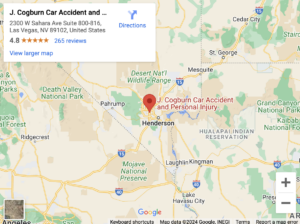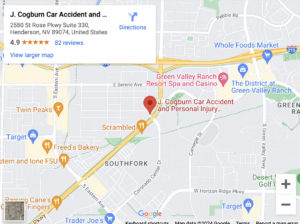
“Negligence” is a legal term that means something like carelessness. It sounds simple, but it can get complicated if you are pursuing a large claim based on the concept.
Negligence law includes many nuances, some of which appear below explained by a personal injury attorney in Las Vegas.
Ordinary Negligence

“Ordinary negligence” is garden-variety carelessness. Although a classic example is texting while driving, Nevada law recognizes many other forms of ordinary negligence. What makes it “ordinary” is that Nevada law demands that every competent adult take care to avoid injuring others through their misconduct.
To prove ordinary negligence, you need to establish the following facts:
- The defendant owed you a duty of care. With ordinary negligence, this is typically a given. For example, a motorist on a public road owes you the duty to drive safely.
- The defendant breached their duty of care. They may or may not have committed a clear-cut violation of the law—sometimes, their behavior is not even illegal.
- You suffered an injury, typically a physical injury. Once you establish physical injury, you can also recover for intangible losses.
- The defendant’s breach of duty caused your injury.
Proving the first two elements, duty of care and breach of duty, technically amounts to proving negligence. Proving negligence is not enough to prove liability (and get compensation), however. You must also prove elements three and four–injury and causation.
Professional Negligence
Professional negligence is an elevated standard of negligence. Typically, doctors and other healthcare professionals must observe a professional duty of care toward their patients. Breach of this duty constitutes negligence.
In most cases, you need an expert witness to help you prove a professional’s duty of care under the particular circumstances of your case.
Gross Negligence
Gross negligence is an extreme form of negligence. If you can prove gross negligence, you might be able to win punitive damages in addition to compensatory damages. This could result in a windfall for you. The following examples might qualify as gross negligence:
- A motorist drives 40 mph over the speed limit in a school zone. It ends up in a car accident.
- A property owner fails to warn a guest about a collapsed staircase.
- A daycare provider leaves young children unattended for an extended length of time.
- A surgeon operates under the influence of intoxicating prescription medication.
Ultimately, it’s a judgment call whether a particular behavior does or does not constitute “gross” negligence. There is also a fine line between negligence and recklessness in many circumstances.
Negligence Per Se
Negligence per se is a shortcut to proving negligence. If the defendant violated a safety law or regulation, and if the violation results in the kind of harm that the statute sought to prevent, the defendant’s behavior is automatically negligent.
In other words, violation of a statute or regulation renders negligence a clear-cut matter rather than a judgment call. Nevertheless, to win, you still have to prove that the defendant’s negligence caused you damages.
Negligence per se matters most in heavily regulated industries such as commercial trucking.
Comparative Negligence
Comparative negligence is a state’s way of distributing compensation among parties to an accident when more than one party is at fault. Each state has its own way of doing this (see below for brief descriptions).
Contributory Negligence
Contributory negligence is an archaic and draconian way of resolving a personal injury case. Under contributory negligence, the plaintiff loses everything if they were even 1% at fault for the accident that injured them.
Only five US jurisdictions still apply contributory negligence: Alabama, Maryland, North Carolina, Virginia, and the District of Columbia.
Pure Comparative Negligence
Pure comparative negligence is close to the opposite of contributory negligence. Under pure comparative negligence, you can recover 1% of your damages even if you were 99% at fault for the accident.
Whatever your percentage of fault, that’s the percentage of your damages you lose. If you were 45% at fault, for example, you would lose 45% of your damages.
Modified Comparative Negligence
Most states, including Nevada, apply a “modified comparative negligence” system to accidents that were more than one party’s fault. Modified comparative negligence works like pure comparative negligence, except that there’s a cutoff at 50% or 51%, depending on the state. If you hit the cutoff, you receive no damages at all.
In Nevada, for example, the cutoff is 51% – in other words, you lose all of your damages if you were more than 50% at fault for the accident. In many other states, the cutoff is 50% – you lose all of your damage if you were at least 50% at fault for the accident.
“Slight/Gross” Negligence
Under South Dakota personal injury law, you can still recover damages with no more than “slight” negligence, so long as the defendant’s negligence was “gross.”
Protect Your Rights After an Accident: Schedule a Free Case Review With a Las Vegas Personal Injury Lawyer
Sometimes, proving negligence is straightforward, and sometimes it’s not. If your claim includes complications, you probably need a personal injury lawyer in Las Vegas.
A good lawyer might be able to double or even triple the size of your compensation. If that happens, you will come out way ahead even after you pay your legal bills.


